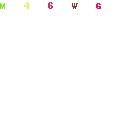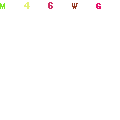
The Haunting of Hill House is a 1959 novel by author Shirley Jackson. Finalist for the National Book Award and considered one of the best literary ghost stories published during the twentieth century, it has been made into two feature films and a play. Jackson’s novel relies on terror rather than horror to elicit emotion by the reader, utilizing complex relationships between the mysterious events in the house and the characters’ psyches.
The 1963 Adapation
![]()
 The 1963 film adaptation of ‘The Haunting’ from a 1963 British psychological horror film by American director Robert Wise and adapted by Nelson Gidding from the novel ‘The Haunting of Hill House’ by Shirley Jackson. It stars Julie Harris, Claire Bloom, Richard Johnson, and Russ Tamblyn. The film centers around the conflict between a team of paranormal investigators and the house in which they spend several nights.
The 1963 film adaptation of ‘The Haunting’ from a 1963 British psychological horror film by American director Robert Wise and adapted by Nelson Gidding from the novel ‘The Haunting of Hill House’ by Shirley Jackson. It stars Julie Harris, Claire Bloom, Richard Johnson, and Russ Tamblyn. The film centers around the conflict between a team of paranormal investigators and the house in which they spend several nights.
The plot begins with Eleanor “Nell” Lance (Julie Harris), Theodora “Theo” (Claire Bloom), and Luke Sanderson (Russ Tamblyn) accompanying Dr. John Markway (Richard Johnson) during his investigation into the paranormal activity of the house. Markway believes that an old mansion with a sinister past called Hill House will provide him with the proof he seeks of the existence of the supernatural. Luke is the next in line to inherit the house, and is volunteered by the current owner to join Markway both as a sceptic and overseer. Nell and Theo are the only responders to an invitation Markway sent out to various people who had come in contact with the supernatural at some point in their lives. After the four meet up in Hill House, strange things begin to happen, most of which seem centered on Nell. She finds that she is both frightened of, and enjoys the attention the house affords her, and becomes drawn deeper and deeper in by the forces within the house.
The Haunting opened in 1963 to mostly positive reviews, and praised the film as “elegantly sinister… good fun”. The film’s stature and following has grown steadily since its original release in 1963 when director Martin Scorsese placed The Haunting first on his list of the 11 scariest horror films of all time.
The Remake
 The 1999 remake of the 1963 film of the The Haunting retained the horror film’s name. And as the first film, the movie is based on the same novel by 1959 novel published by Shirley Jackson. This version of The Haunting was directed by Jan de Bont and stars Liam Neeson, Catherine Zeta-Jones, Owen Wilson and Lili Taylor, and was released in the United States on 23 July 1999 with fair reviews.
The 1999 remake of the 1963 film of the The Haunting retained the horror film’s name. And as the first film, the movie is based on the same novel by 1959 novel published by Shirley Jackson. This version of The Haunting was directed by Jan de Bont and stars Liam Neeson, Catherine Zeta-Jones, Owen Wilson and Lili Taylor, and was released in the United States on 23 July 1999 with fair reviews.
The Plot (If you’d like to watch the film…I’d skip this part!)
Eleanor “Nell” Vance (Lili Taylor) has cared for her invalid mother for 11 years. After her mother dies, her sister (Virginia Madsen) evicts her. Nell receives a phone call about an insomnia study, directed by Dr. David Marrow (Liam Neeson) at Hill House, a secluded manor in the Berkshires of western Massachusetts, and applies for it. At the house, she meets Mr. and Mrs. Dudley (Bruce Dern, Marian Seldes), a strange pair of caretakers. Two other participants arrive, Luke Sanderson (Owen Wilson), and the bisexual Theodora (Catherine Zeta-Jones), along with Dr. Marrow and his two research assistants.
Unknown to the participants, Dr. Marrow’s true purpose is to study the psychological response to fear, intending to expose his subjects to increasing amounts of terror. Each night, the caretakers chain the gate outside Hill House, preventing anyone from getting in or out until morning. During their first night, Dr. Marrow relates the story of Hill House. The house was built by Hugh Crain (Charles Gunning) — a 19th century textile tycoon. Crain built the house for his wife, hoping to populate it with a large family of children; however, all of Crain’s children died during birth. Crain’s wife died before the house was finished, and Crain became a recluse. After the story, Marrow’s assistant’s face is slashed by a snapped clavichord wire. The freak accident causes Marrow’s research assistants to leave.
Theo and Nell begin to experience strange phenomena within the house. Nell sees apparitions, but the others don’t believe her. Hugh Crain’s wood portrait morphs into a skeletal face and is vandalized with the words “Welcome Home Eleanor” written in blood. Nell becomes determined to prove that the house is haunted by the souls of people victimized by Crain’s cruelty. She learns that Crain took children from his mills and murdered them, then burned the bodies in the fireplace, trapping their spirits and forcing them to remain with him, providing him with an ‘eternal family’. She also learns that Crain had a second wife named Carolyn, from whom she is descended.
After several more terrifying events, Nell insists that she cannot leave the souls of the children to suffer for eternity at Crain’s hands. Trying to convince the obviously mentally-unbalanced Eleanor to leave the house with them, Theo offers to let Nell move in with her, but Nell reveals her relation to Carolyn and claims she must help the children “pass on”. Hugh Crain’s spirit seals up the house, trapping them all inside. A frustrated Luke defaces a portrait of Hugh Crain. Crain’s enraged spirit drags Luke to the fireplace where he is decapitated. Nell is able to lead Crain’s spirit towards an iron door. Avenging spirits pull Crain into the door, dragging him down to Hell. Nell is pulled with him, inflicting fatal trauma on her body, but the spirits gently release her on the ground. Her soul rises up to Heaven, accompanied by the ghosts of Crain’s victims. After Nell’s death, Theo and Dr. Marrow wait by the gate outside till the Dudleys come in the morning.
The Dudleys approach as the sun rises. Mr. Dudley asks Dr. Marrow if he found what he wanted to know, but the traumatized psychiatrist does not give an answer, and neither does Theo. When the gate opens, the two silently walk out and down the road, leaving Hill House behind them.
Deviations from the Novel
- The “ghostly” elements are experienced mainly by Eleanor and can all be considered imaginary, delusional, or contrived by human agency as well as being true ghostly events. Eleanor develops a strange affection for the house and is implied, eventually, as having pre-existing psychological troubles (or perhaps some sort of psychic ability): the doctor admits that he made a mistake by having her in the house, and dismisses her from the study. Eleanor dies (either by suicide or by ghostly intervention) by her car crashing into a tree just outside the House. In the 1999 film, she dies when she is dragged into the iron doors along with Hugh Crain’s malevolent spirit, and her soul later rises to heaven.
- Eleanor is portrayed in the 1999 film as a heroic “messiah” of sorts, breaking the curse of Hill House and releasing the souls of the children from Crain’s captivity (as opposed to just being a tragic, disturbed, and delusional character).
- Dr. John Montague of the novel is re-named Dr. David Marrow. In the novel and original film, he wished to find proof of the supernatural, but in the 1999 film, he wishes to study the psychological effects of fear.
- In the novel and original film, Luke Sanderson survives his stay at Hill House.
Production
Wes Craven was at one point developing a remake of The Haunting, but dropped out in favor of Scream 3. Under Dreamworks, the film was originally to have been a collaboration between Steven Spielberg (mainly, as director) and Stephen King (as screenwriter), but the two had creative differences. King instead wrote the teleplay for Rose Red, a television miniseries that shares many elements with Jackson’s source novel, The Haunting of Hill House, and the character of the real-life edifice Winchester Mystery House, in San Jose, California.
Argentine production designer Eugenio Zanetti (Restoration – 1995 and What Dreams May Come – 1998) oversaw the set designs.
Filming
Harlaxton Manor, in England, was used as the exterior of Hill House. The billiard room scene was filmed in the Great Hall of the manor, while many of the interior sets were built inside the dome-shaped hangar that once housed The Spruce Goose, near the permanently docked RMS Queen Mary steamship, in Long Beach, California. The kitchen scenes were filmed at Belvoir Castle.
Critical Receptions
The Haunting received a negative reception, with most critics citing its weak screenplay, its overuse of horror clichés, and its overdone CGI effects. Rotten Tomatoes gave the film a “Rotten” rating of 17%, with the critical consensus stating “Sophisticated visual effects fail to offset awkward performances and an uneven script.” Roger Ebert was one of few critics to give the film a positive review, praising the production design in particular. As a result of the negative reviews, it was nominated for five Razzie Awards. However, the film was a financial success, earning $91.2 million domestically and $177.3 million worldwide, with a budget of $80 million. So much for the critics!
 |
 |
 |
 |
 |
 |


